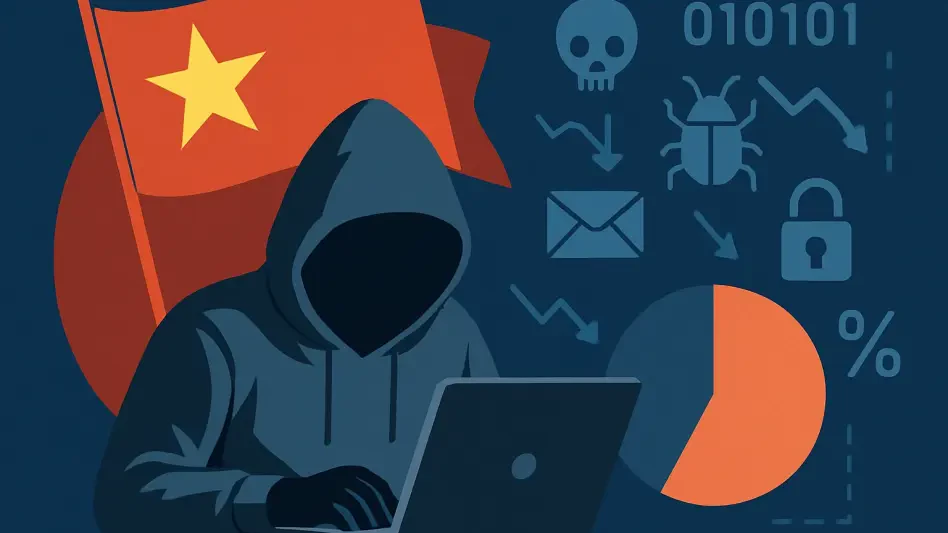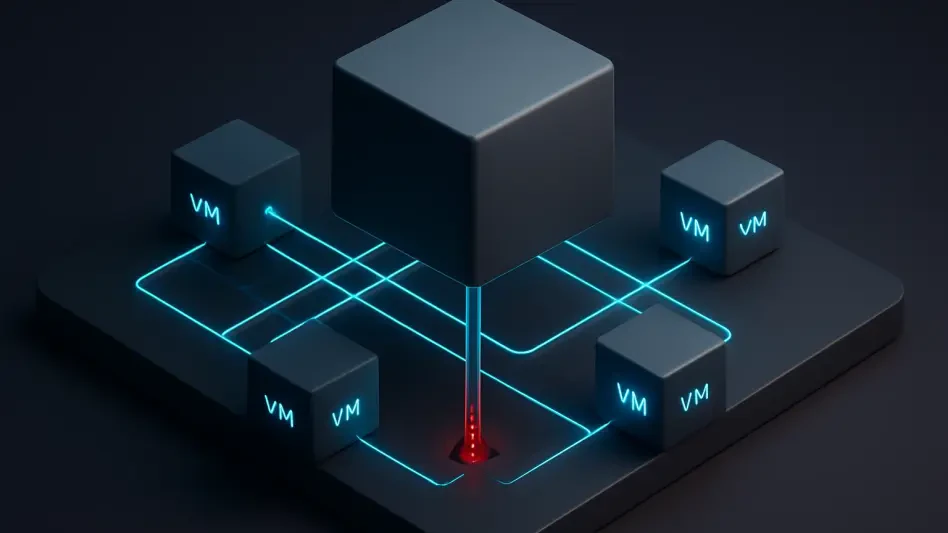In an era where digital infrastructure underpins global economies, a staggering statistic emerges: 53% of all cyber exploits are now driven by state-sponsored actors, signaling a seismic shift in the cybersecurity market. Nation-states wield cyber tools not just for espionage, but as instruments of geopolitical strategy and disruption. The purpose of this analysis is to dissect the current state of the cyber threat market, exploring the dominance of state-backed attacks, the proliferation of vulnerabilities, and the evolving tactics that challenge organizations worldwide. By delving into detailed data and market patterns, this examination aims to equip businesses with actionable insights to navigate an increasingly hostile digital environment. The importance of understanding these dynamics cannot be overstated, as the intersection of technology and geopolitics continues to redefine risk management and defense strategies.
Unpacking the Market Dynamics of Cyber Threats
State-Sponsored Dominance Redefines Risk Profile
The cyber threat market has undergone a profound transformation, with state-sponsored actors commanding 53% of vulnerability exploits. Unlike traditional cybercriminals driven by financial gain, these nation-state groups prioritize strategic objectives such as intelligence gathering, intellectual property theft, and critical infrastructure sabotage. Notably, China-based entities have been identified as prolific players, targeting specific software flaws in widely used products to gain tactical advantages. This shift elevates the stakes for both private and public sectors, as organizations find themselves unintended targets in broader geopolitical conflicts, necessitating a reevaluation of risk assessment models to account for such sophisticated adversaries.
Beyond the sheer volume of state-backed attacks, their precision and persistence set them apart from other threat categories. These actors often operate with significant resources, leveraging advanced persistent threat (APT) groups to sustain long-term campaigns. Their focus on high-value targets means that even smaller enterprises can become collateral damage if they serve as entry points to larger networks. This market reality underscores a growing need for comprehensive defense strategies that address not only technical vulnerabilities but also the broader context of international cyber warfare.
Vulnerability Surge Fuels Market Volatility
Another critical factor shaping the cyber threat market is the dramatic increase in disclosed vulnerabilities, with over 23,000 new Common Vulnerabilities and Exposures (CVEs) recorded in the first half of this year alone, marking a 16% rise compared to last year. Of the actively exploited flaws, a significant 69% require no authentication, while 30% enable remote code execution, drastically lowering the barrier for attackers. Furthermore, publicly available proof-of-concept exploits for 42% of these vulnerabilities have triggered spikes in attack activity, amplifying market volatility as both state and non-state actors capitalize on these opportunities.
The concentration of attacks on specific technologies also reveals key market pain points. Edge devices and Microsoft products each account for 17% of observed exploits, positioning them as prime targets in the threat landscape. This trend highlights a dual challenge for cybersecurity vendors and organizations: addressing the rapid pace of vulnerability discovery while fortifying widely adopted systems against exploitation. As the market grapples with this influx, the demand for real-time threat intelligence and automated patching solutions is surging, creating opportunities for innovation amidst escalating risks.
Diverse Threat Actors and Evolving Tactics
The cyber threat market is further complicated by the diversity of actors and their evolving methodologies. While state-sponsored groups lead with 53% of exploits, financially motivated non-ransomware actors contribute 27%, and ransomware operators account for 20%, reflecting a spectrum of motivations driving attacks. Ransomware, in particular, remains a persistent concern, with strains like LockBit leading in prevalence and social engineering tactics such as ClickFix gaining traction for initial access. These patterns indicate a market where opportunistic and strategic threats coexist, requiring adaptable defenses to counter varied attack vectors.
Technological advancements among threat actors add another layer of complexity to market dynamics. Mobile malware, for instance, has seen the emergence of new strains exploiting Android accessibility services and near-field communication relay techniques. Web-based threats, such as e-skimmers targeting e-commerce platforms, demonstrate adaptability by shifting focus to popular plugins. Meanwhile, evasion techniques like bring-your-own-installer bypasses and just-in-time hooking challenge traditional endpoint detection solutions, pushing the cybersecurity market toward more sophisticated behavioral monitoring tools to stay ahead of attackers.
Projections: A Future of Heightened Complexity
Looking ahead, the cyber threat market is poised for increased complexity driven by technological innovation and geopolitical tensions. The integration of artificial intelligence and machine learning into attack strategies is expected to enhance the precision and scalability of exploits, particularly for state-sponsored actors. Conversely, these technologies also hold promise for bolstering defensive capabilities, potentially shifting market dynamics if widely adopted by organizations and security vendors. Projections suggest that over the next few years, from this year to 2027, the balance between attack and defense may hinge on the speed of AI-driven innovation adoption.
Additionally, regulatory developments are likely to influence market trajectories. Stricter data protection laws and potential international cyber agreements could either curb state-sponsored activities or escalate covert operations, depending on enforcement mechanisms. The resurgence of legacy malware alongside cutting-edge threats points to a market where old and new risks converge, necessitating a blended approach to security. As these trends unfold, organizations must anticipate a landscape where agility and foresight become critical competitive advantages in mitigating cyber risks.
Reflecting on the Cyber Threat Market Evolution
This analysis of the cyber threat market reveals a landscape profoundly shaped by the dominance of state-sponsored attacks, which accounted for 53% of exploits in the first half of this year. The surge in vulnerabilities and the adaptability of threat actors, from ransomware operators to mobile malware developers, underscore the escalating challenges faced by organizations. Looking back, the data paints a picture of a market at a critical juncture, where geopolitical motives intertwine with technological advancements to redefine risk. Moving forward, businesses should focus on strategic investments in real-time threat intelligence and prioritize rapid vulnerability patching to address high-risk areas like edge devices. Additionally, fostering international collaboration to counter state-backed threats could prove vital in stabilizing this volatile market. By taking these proactive steps, stakeholders can build resilience and turn the tide against an ever-evolving array of cyber adversaries.








